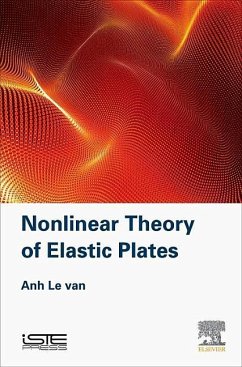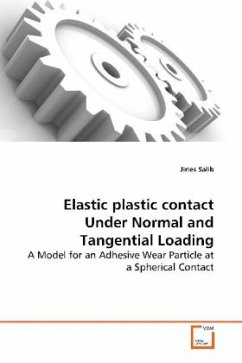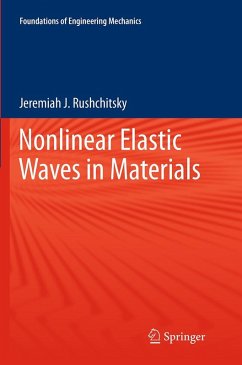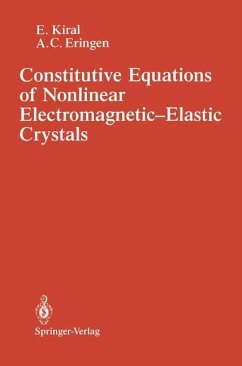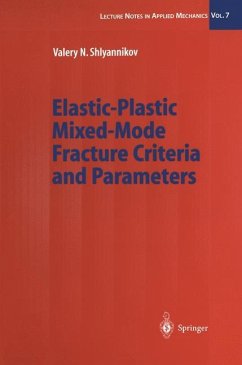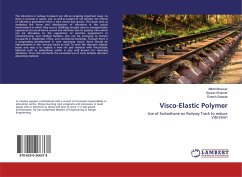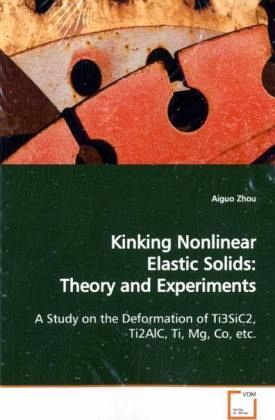
Kinking Nonlinear Elastic Solids: Theory and Experiments
A Study on the Deformation of Ti3SiC2, Ti2AlC, Ti, Mg, Co, etc.
Versandkostenfrei!
Versandfertig in 6-10 Tagen
52,99 €
inkl. MwSt.

PAYBACK Punkte
26 °P sammeln!
Recently some solids were classified as kinkingnonlinear elastic (KNE) solids because of plasticanisotropy. The KNE solids exhibit large mechanicalhysteresis due to the reproducible growth andshrinkage of incipient kink bands (IKBs). IKBs arethe precursor of regular kink bands.The stress-strain curves of KNE solids can bedescribed by 4 parameters. In this book a microscalemodel based on fully reversible dislocation motion isproposed to relate the four parameters. Amathematical method based on Preisach-Mayergoyz model(P-M model) was also developed to calculate thestrain of KNE solids from their...
Recently some solids were classified as kinking
nonlinear elastic (KNE) solids because of plastic
anisotropy. The KNE solids exhibit large mechanical
hysteresis due to the reproducible growth and
shrinkage of incipient kink bands (IKBs). IKBs are
the precursor of regular kink bands.
The stress-strain curves of KNE solids can be
described by 4 parameters. In this book a microscale
model based on fully reversible dislocation motion is
proposed to relate the four parameters. A
mathematical method based on Preisach-Mayergoyz model
(P-M model) was also developed to calculate the
strain of KNE solids from their stress history.
Select MAX phases (Ti3SiC2, Ti2AlC and some of their
solids solutions) and the hexagonal metals (Ti, Mg,
Co) were tested. Their kinking nonlinear elastic
deformations were studied as a function of grains
size, porosity, deformation history and texture.
IKB theory successfully explains the damping,
microyielding and initial deformation of hexagonal
metals, which are not fully understood or
misunderstood for a long time. Based on this work
there is little doubt that incipient kink bands
constitute the last piece in the
deformation-of-solids puzzle.
nonlinear elastic (KNE) solids because of plastic
anisotropy. The KNE solids exhibit large mechanical
hysteresis due to the reproducible growth and
shrinkage of incipient kink bands (IKBs). IKBs are
the precursor of regular kink bands.
The stress-strain curves of KNE solids can be
described by 4 parameters. In this book a microscale
model based on fully reversible dislocation motion is
proposed to relate the four parameters. A
mathematical method based on Preisach-Mayergoyz model
(P-M model) was also developed to calculate the
strain of KNE solids from their stress history.
Select MAX phases (Ti3SiC2, Ti2AlC and some of their
solids solutions) and the hexagonal metals (Ti, Mg,
Co) were tested. Their kinking nonlinear elastic
deformations were studied as a function of grains
size, porosity, deformation history and texture.
IKB theory successfully explains the damping,
microyielding and initial deformation of hexagonal
metals, which are not fully understood or
misunderstood for a long time. Based on this work
there is little doubt that incipient kink bands
constitute the last piece in the
deformation-of-solids puzzle.



